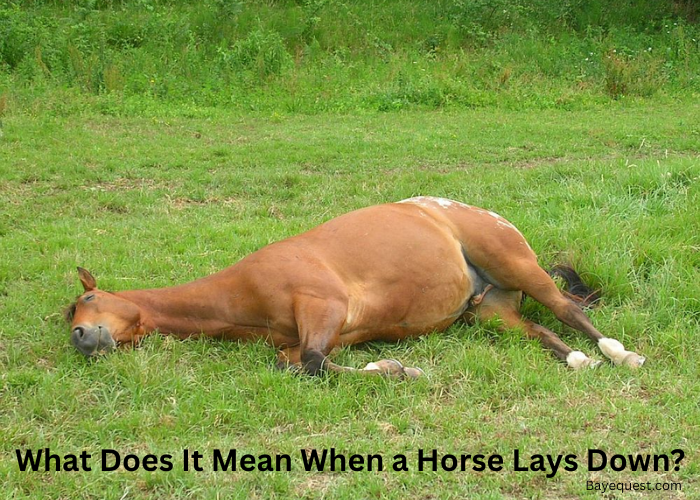Horse bits come in many shapes and styles. Each one serves a specific purpose.
The right bit isn’t just about control, it’s also about comfort too.
From the gentle snaffle to the stronger curb, every bit affects how you communicate with your horse. Some offer direct cues, while others use leverage for a different feel.
This guide breaks down the main types of horse bits. You’ll learn what they do and how they work.
Whether you’re a beginner or an experienced rider, understanding bits can improve your connection with your horse.
What is a Horse Bit?
A horse bit is a piece of tack that goes inside a horse’s mouth, helping the rider communicate with the horse.
It attaches to the bridle and connects to the reins, allowing the rider to guide, stop, and control the horse’s movements.
The bit works by applying pressure to different parts of the horse’s mouth, chin, and poll, depending on the type.
Choosing the right bit ensures the horse is comfortable while still giving the rider effective control.
Bits come in various styles and materials, each with a specific purpose and effect.
Related read: What is a Horse Bridle?
How Do Horse Bits Work?
Horse bits work by applying pressure to specific areas of the horse’s mouth, head, and sometimes the chin or poll.
When the rider pulls on the reins, the bit communicates cues to the horse by pressing against parts like the tongue, bars and sometimes the roof of the mouth.
Different bits distribute pressure differently. Snaffle bits apply direct pressure, while curb bits use leverage to amplify the force.
The way a bit works depends on its design, and the goal is to use subtle cues for effective, gentle communication between the rider and horse.
What are the Parts of a Horse Bit?
Let’s break down the main parts of a horse bit:
Mouthpiece
This is the central part that goes inside the horse’s mouth. It can be single-jointed, double-jointed, or solid, affecting how it applies pressure.
The mouthpiece can also vary in thickness and material, which influences comfort.
Rings or cheeks
These are the sides of the bit that attach to the bridle.
In snaffle bits, these are often rings (like loose rings or D-rings), while curb bits have cheeks or shanks, which may be long or short.
Shanks
Found in curb bits, shanks are the arms extending below the mouthpiece that provide leverage.
The length of the shanks affects the amount of leverage applied.
Bars
The bars are the sides of the bit that rest on the toothless area of the horse’s mouth (between the front and back teeth).
Pressure on the bars helps signal the horse.
Curb chain or strap
In curb bits, the curb chain or strap sits under the horse’s chin.
When pressure is applied through the reins, the curb chain tightens, adding leverage and aiding control.
Port
Some bits have a raised section in the center of the mouthpiece, called a port.
Ports can vary in size and help provide tongue relief or apply pressure to the roof of the mouth, depending on their height.
19 Different Horse Bit Types of Horse Bits
Discover 11 types of horse bits, each designed to enhance control, comfort, and communication
Snaffle Bits
Snaffle bits are some of the most commonly used bits in horse riding. They are simple, direct, and easy for horses to understand.
They work without leverage, applying direct pressure to the mouth, making them gentle and effective for everyday riding and training.
These bits are ideal for young horses starting or for any horse that responds well to straightforward cues.
Let’s look at different types of snaffle bits and how each one can benefit your horse.
1. Loose ring snaffle
The loose ring snaffle has a mouthpiece that attaches to loose, circular rings. These rings move freely, which allows the bit to move slightly in the horse’s mouth.
This movement encourages the horse to stay relaxed and chew softly.
Riders often use this bit for young or inexperienced horses because it offers direct pressure without leverage, making it easier for the horse to understand signals.
The loose ring snaffle is unique because it provides flexibility, which can help a horse that tends to resist more fixed bits.
2. D-Ring snaffle
The D-ring snaffle gets its name from its D-shaped sides. Unlike the loose ring, the sides are fixed, which helps keep the bit steady in the horse’s mouth.
This stability prevents the bit from sliding around or pinching the horse’s lips.
The D-ring is good for horses that need more consistent contact, as the shape keeps the bit comfortably in place.
It is often used during training, offering a mix of control and stability without being too harsh.
The unique feature of this bit is its ability to give steady contact, which helps young horses learn without discomfort.
3. Eggbutt snaffle
The eggbutt snaffle has oval-shaped sides that prevent pinching, making it comfortable for the horse.
The fixed sides provide a consistent feel, which helps with communication between the horse and rider.
This bit is often used for general riding or training because it provides gentle, steady contact.
Horses that are sensitive in the mouth do well with this bit because it doesn’t move as much and won’t cause irritation.
What makes the eggbutt unique is the comfort it offers, making it a good choice for beginners and horses needing a bit more care.
4. Full cheek snaffle
The full cheek snaffle has long bars on the sides. These bars prevent the bit from sliding through the horse’s mouth.
This design helps provide better lateral control. Riders often use it for young or green horses that need extra guidance.
The full cheek also encourages direct rein pressure. It works well for horses that need help with steering.
Some designs have keepers, which attach to the bridle for added stability. This prevents the bit from rotating too much inside the mouth.
5. Baucher Snaffle
The Baucher snaffle is also called a hanging cheek snaffle. It has a small ring on top for the cheekpiece and a larger ring for the reins.
This design gives a little bit of poll pressure. It encourages the horse to lower its head and relax.
The mouthpiece can be jointed or solid, depending on the rider’s preference. This bit is useful for horses that resist the contact of other snaffles.
It provides stability and reduces movement inside the mouth. Many dressage riders use this bit for a softer feel.
Curb Bits (Leverage bits)
Curb bits, also known as leverage bits, are designed to provide the rider with extra control by using leverage.
Unlike snaffle bits, curb bits work by applying pressure not only to the horse’s mouth but also to the poll and chin.
This leverage makes them ideal for experienced riders handling strong or well-trained horses that respond to subtle cues.
Curb bits are commonly used in disciplines like Western riding and dressage, where refined control is needed.
Let’s explore different types of curb bits and how they work to help riders communicate effectively.
6. Pelham bit
This bit combines features of both snaffle and curb bits. It has shanks that provide leverage and can be used with either one or two reins.
One rein works for direct pressure, while the other adds leverage for more control.
This makes the Pelham versatile; it can be used for both simple and complex riding situations.
It’s often used in disciplines like jumping, where riders need control without being overly harsh.
The Pelham bit offers flexibility for different riding needs, giving the rider both direct contact and leverage when needed.
7. Western curb bit
The Western curb bit is popular in Western riding. It has long shanks that create leverage, which means small movements of the reins can apply significant pressure.
This leverage applies pressure to the horse’s mouth, chin, and poll, which helps guide the horse with light cues.
Riders often use it with well-trained horses that respond to gentle signals. The curb chain also helps by putting pressure under the chin when the reins are pulled.
This bit provides strong leverage.
8. Weymouth bit
The Weymouth bit is used in dressage. It is part of a double bridle setup, paired with a bridoon bit.
It has long shanks, which provide leverage for more refined control. It works by applying pressure to multiple points: the horse’s mouth, chin, and poll.
This bit allows riders to make subtle adjustments. This is important for performing advanced dressage movements.
9. Argentine bit
The Argentine bit is a mild curb bit. It combines elements of both snaffle and curb bits.
It has short shanks, which offer some leverage, but not too much. This makes it gentler than a traditional Western curb bit.
The mouthpiece is often jointed, allowing for some independent movement. This bit applies pressure on the bars, tongue, and poll.
Riders use it for horses that need a little extra control without being too strong. It is commonly found in Western disciplines.
10. Tom thumb bit
The Tom Thumb bit looks like a snaffle but works as a curb. It has short shanks that create leverage.
The jointed mouthpiece applies pressure on the bars and tongue. It also adds poll pressure when the reins are pulled.
This bit gives more control than a regular snaffle. However, it can be harsh if used with heavy hands.
It’s popular in Western riding, especially for horses that need more response. Riders should use it carefully to avoid discomfort.
Combination bits
Combination bits bring together features of both snaffle and curb bits.
They provide riders with added versatility, making them ideal for horses that need moderate control without the intensity of a full curb.
Let’s dive into some common types of combination bits and see how they work.
11. Kimberwick bit
The Kimberwick bit is a combination of snaffle and curb bit features. It has slots for the reins, which allows the rider to adjust the level of leverage.
The bit applies pressure to both the horse’s mouth and chin, giving the rider more control than a snaffle but not as much as a full curb.
It’s often used for horses that need a bit more control, especially when transitioning from a snaffle.
The unique aspect of the Kimberwick is its moderate leverage, which offers flexibility without overwhelming the horse.
12. Gag bit
The gag bit works by sliding up and down the cheekpieces of the bridle.
When the rider pulls on the reins, the bit moves upwards, applying pressure to the horse’s mouth and poll.
This encourages the horse to lift its head, making it helpful for horses that tend to lean on the bit or pull too hard.
Gag bits are often used in show jumping, where the rider needs more control, especially for strong or headstrong horses.
13. Elevator bit
The elevator bit is designed for extra lift and control. It has multiple rein placements, allowing the rider to adjust leverage.
The higher the rein is placed, the stronger the effect. This bit applies pressure to the mouth, poll, and sometimes the chin.
It helps horses balance and stay light in the front. It is commonly used in jumping disciplines.
Riders often use it for strong horses that pull or lean. Because of its leverage, it should be used by experienced hands.
14. Myler bit
The Myler bit is a modern bit with an ergonomic design. It allows for independent side movement, meaning the rider can cue one side at a time.
The mouthpiece is curved to distribute pressure evenly. This design reduces discomfort and encourages relaxation.
Some Myler bits have a small port, which provides tongue relief. This bit is often used for horses that resist traditional snaffles.
It’s available in both English and Western styles. Many riders prefer it for its gentle yet effective communication.
Specialty bits
Specialty bits are unique tools used for specific needs, often for horses that dislike traditional bits.
Some, like hackamores, work without going in the horse’s mouth, using pressure on the nose and jaw.
Others, like bitless bridles, offer gentle control, improving comfort and communication for sensitive horses.
15. Hackamore
A hackamore is a bitless option that works by applying pressure to the horse’s nose and chin instead of inside the mouth.
It uses a noseband and sometimes a curb strap to create pressure when the reins are pulled.
Hackamores are often used for horses that have mouth injuries or are very sensitive to bits.
They are also popular in disciplines like endurance riding, where comfort is key.
The hackamore bridle allows the rider to communicate without putting anything inside the horse’s mouth.
16. Bitless bridle
A bitless bridle works without a mouthpiece. Instead, it uses straps that wrap around the horse’s head, applying pressure to the face and jaw when the rider pulls on the reins.
This type of bridle provides control without the need for a bit, which can be helpful for horses with dental problems or those that are bit-shy.
The bitless bridle distributes pressure evenly, which keeps the horse calm and responsive.
It is often used in trail riding or for horses that don’t respond well to traditional bits.
17. Liverpool bit
The Liverpool bit is primarily used for driving horses. It has shanks with multiple slots, allowing the driver to attach the reins at different levels for varying degrees of leverage.
The more leverage required, the lower the reins are attached.
This bit works by applying pressure to the horse’s mouth, chin, and poll, giving the driver precise control.
It’s commonly used in harness disciplines where clear, strong communication is needed.
18. Mullen mouth bit
The Mullen mouth bit has a straight or slightly curved mouthpiece. Unlike jointed bits, it does not create a nutcracker effect.
This makes it softer on the tongue and bars. It applies even pressure, encouraging the horse to accept the contact.
This bit is often used for sensitive horses. Some versions have a slight port for extra tongue relief.
It’s found in both snaffle and curb styles. Riders like it for its simple, mild design.
19. Waterford bit
The Waterford bit has a flexible mouthpiece made of ball-shaped links. This unique design prevents the horse from leaning on the bit.
It moves in the horse’s mouth, making it harder for the horse to grab and pull. The Waterford bit applies pressure on the bars and tongue but remains gentle if used correctly.
It is a good choice for strong horses that tend to take control. However, it requires light hands.
Riders should not use it for inexperienced horses, as they may find it confusing.
20. Klapper bits
Klapper bits are high-end, handcrafted bits designed for performance, precision, and horse comfort. They often feature ergonomic mouthpieces that reduce pressure points and allow clearer communication between horse and rider.
What sets Klapper bits apart is their balanced design and top-quality materials, like sweet iron or copper inlays. These bits are favored by professional riders and trainers who want subtle control without sacrificing the horse’s comfort.
Klapper offers various styles, including snaffle and curb configurations, each made with attention to detail.
How to Choose the Right Bit for Your Horse
Choosing the right bit for your horse can feel overwhelming, but it doesn’t have to be.
Start by thinking about your horse’s comfort. If your horse has a sensitive mouth, go for a softer bit like a snaffle.
Next, consider your horse riding style. Do you need more control? A bit with leverage might be better.
Watch how your horse reacts. If the horse tosses its head or seems uncomfortable, try something different.
Remember, every horse is unique. Finding the right bit takes time and patience, but the right one can make a big difference in your communication.
How Do You Know What Bit to Use on a House?
Figuring out the right bit for your horse takes some trial and error. Start by looking at how your horse reacts to its current bit.
Is it comfortable, or does it toss its head a lot? If it seems unhappy, try something gentler, like a snaffle.
For more control, you might need a bit with leverage, like a curb. Also, think about your horse’s training level.
Young or inexperienced horses usually do better with simpler bits.
Take it slow, pay attention to how your horse feels, and adjust until you find what works best for both of you.
Types of Bits: Conclusion
Choosing the right bit makes all the difference in how you and your horse connect.
With so many types of horse bits out there, it’s all about finding what feels right for both of you.
Whether it’s a snaffle, a curb, or something more unique, each bit has its place.
Take your time, listen to your horse, and remember, comfort and clear communication are key.
The right bit can turn a good ride into a great one, making every moment together more enjoyable.






